
Journal of Science in Sport and Exercise
Scope & Guideline
Exploring the Intersection of Science and Athleticism
Introduction
Aims and Scopes
- Exercise Physiology and Biomechanics:
Investigates the physiological and biomechanical responses to various forms of exercise, including resistance training, endurance activities, and skill-based sports, to optimize performance and health outcomes. - Sports Nutrition and Supplementation:
Explores dietary strategies and supplementation practices aimed at enhancing athletic performance, recovery, and overall health, with a focus on evidence-based recommendations. - Injury Prevention and Rehabilitation:
Focuses on interventions and strategies to prevent sports-related injuries, as well as rehabilitation protocols for injured athletes, emphasizing the importance of safe practices in sports. - Psychological Aspects of Sport and Exercise:
Examines the psychological factors influencing athletic performance and exercise adherence, including stress management, motivation, and the impact of mental health on physical performance. - Special Populations and Health Interventions:
Addresses the unique needs of various populations, such as children, older adults, and individuals with chronic health conditions, focusing on tailored exercise interventions for health promotion. - Technological Innovations in Sports Science:
Highlights advancements in technology that enhance training, monitoring, and performance analysis in sports, including wearable devices and software applications.
Trending and Emerging
- Exercise and Mental Health:
There is an increasing focus on the relationship between physical activity and mental health outcomes, particularly in populations with mental health disorders or during chronic illnesses, emphasizing the therapeutic role of exercise. - Heat Adaptation and Performance:
Research on heat acclimation and its effects on athletic performance in varying environmental conditions has gained prominence, reflecting the need for strategies to optimize performance in extreme temperatures. - Innovative Training Techniques:
Emerging interest in unconventional training methods, such as high-intensity functional training and varied resistance training protocols, showcases a shift towards more creative and effective training strategies. - Nutritional Interventions for Performance Enhancement:
A growing body of literature is focusing on specific dietary interventions and supplementation strategies that can significantly impact athletic performance and recovery, indicating a trend towards personalized nutrition. - Technology-Driven Performance Monitoring:
The integration of technology in training and performance monitoring, including the use of wearable devices and data analytics, is becoming increasingly significant as athletes and coaches seek to optimize training outcomes.
Declining or Waning
- Traditional Strength Training Methodologies:
While strength training remains important, there has been a noticeable decrease in studies solely focused on traditional resistance training methods, as researchers explore more dynamic and sport-specific training modalities. - Generalized Physical Activity Guidelines:
Research centered around broad physical activity guidelines is becoming less frequent, with a shift towards more targeted interventions that address specific populations or conditions. - Basic Physiological Assessments:
The prevalence of studies focusing on basic physiological assessments, such as standard VO<sub>2</sub> max tests, has declined in favor of more complex investigations into physiological responses during specific sports or activities.
Similar Journals

Annals of Applied Sport Science
Empowering the Future of Applied Sport ScienceThe Annals of Applied Sport Science, published by ANNALS APPLIED SPORT SCIENCE, is an esteemed open-access journal dedicated to advancing research in the fields of applied psychology, orthopedics, sports medicine, physical therapy, and social sciences related to sports and recreation. Launched in 2013, this journal aims to foster collaboration among researchers, practitioners, and educators by disseminating high-quality, peer-reviewed research that addresses contemporary issues in sports science and practices. Operating from Iran, the journal has demonstrated its significance by maintaining a strong presence in various academic rankings, including Q4 rank in Applied Psychology and Q3 ranks in Orthopedics and Sports Medicine, demonstrating its multidisciplinary approach. As it embarks on converging research from 2017 to 2024, the journal welcomes contributions that span innovative methodologies, evidence-based practices, and critical discussions that shape future perspectives in sports-related fields. With an accessible format, the Annals of Applied Sport Science is poised to make a lasting impact on its community of readers, including researchers, professionals, and students eager to engage with cutting-edge findings and trends.
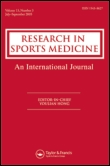
Research in Sports Medicine
Fostering Excellence in Sports Health PracticesResearch in Sports Medicine, published by Taylor & Francis Ltd, stands as a vital resource for scholars and professionals engaged in the multifaceted fields of sports medicine, orthopedics, and rehabilitation. With a distinguished impact factor reflecting its academic rigor and relevance, the journal has achieved impressive rankings, including Q2 in Medicine (miscellaneous), Q1 in Orthopedics and Sports Medicine, and both Q1 and Q2 in Physical Therapy, Sports Therapy and Rehabilitation, and Sports Science, respectively. The journal serves as a pivotal platform for disseminating cutting-edge research, fostering innovative practices, and addressing contemporary issues within sports and exercise science. Researchers will benefit from its comprehensive coverage spanning various dimensions of sports health and therapy, making it a cornerstone for advancing knowledge and improving patient outcomes in athletic and rehabilitative settings.
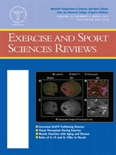
EXERCISE AND SPORT SCIENCES REVIEWS
Unveiling the latest breakthroughs in exercise physiology.Exercise and Sport Sciences Reviews is a premier journal published by Lippincott Williams & Wilkins, dedicated to advancing the field of kinesiology and sports science. With a history dating back to 1973 and an esteemed reputation, this journal maintains a robust impact factor and is recognized in the top quartile for its categories, including Orthopedics and Sports Medicine, Physical Therapy, Sports Therapy and Rehabilitation, and Sports Science. Researchers and professionals in the areas of exercise physiology, rehabilitation, and sports medicine rely on this authoritative source for cutting-edge reviews and meta-analyses that inform clinical practices and improve athletic performance. Although the journal is not Open Access, its substantial contributions to evidence-based practices solidify its importance in guiding future research and policy in the health sciences. The insights shared within its pages are essential for professionals looking to stay at the forefront of their fields, encouraging the advancement of science through comprehensive literature reviews and critical discussions of contemporary issues.
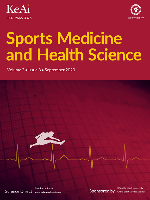
Sports Medicine and Health Science
Innovating the Future of Sports Health and TherapySports Medicine and Health Science, published by KEAI PUBLISHING LTD, stands as a pivotal resource for scholars and practitioners in the dynamic fields of sports medicine and health sciences. Established as an open access journal in 2019, it provides a platform for rigorous research that fosters innovation and improvement in physical therapy, rehabilitation, and orthopedics. With an impressive range of quartile rankings, it is recognized as a Q1 journal in Physical Therapy, Sports Therapy and Rehabilitation, and Q1 in Rehabilitation as of 2023, highlighting its esteemed contribution to the academic community. The journal is also notable for its high Scopus rankings, including a rank of #19 in Medicine Rehabilitation, situating it within the top percentile of research in these areas. Based in Beijing, China, the journal's scope encompasses a wide array of topics, ensuring comprehensive coverage of advancements and emerging trends. With its commitment to open access and high-quality content, Sports Medicine and Health Science is an essential publication for researchers, healthcare professionals, and students seeking to enhance their knowledge and contribute to the field.

BIOLOGY OF SPORT
Advancing Athletic Science for Optimal PerformanceBIOLOGY OF SPORT is a leading peer-reviewed journal published by TERMEDIA PUBLISHING HOUSE LTD, renowned for its significant contributions to the fields of sports science, orthopedics, and rehabilitation. Since its establishment in 1984, this Open Access journal has facilitated the dissemination of important research findings and clinical practices that advance our understanding of athletic performance and physical health. With an impressive Q1 ranking in key categories such as Orthopedics and Sports Medicine, Physical Therapy, and Physiology, BIOLOGY OF SPORT is recognized for its rigorous standards and high-impact contributions, boasting a 95th percentile ranking in several Scopus categories. The journal is committed to fostering interdisciplinary knowledge that bridges fundamental biology with practical sports applications, making it an invaluable resource for researchers, healthcare professionals, and students dedicated to improving health and performance in sports contexts. For more information, you can explore their offerings and access articles at their Poland-based headquarters: KLEEBERGA 2, POZNAN 61-615.

MEDICINA DELLO SPORT
Transforming the Future of Sports Health and RehabilitationMEDICINA DELLO SPORT is a distinguished journal published by EDIZIONI MINERVA MEDICA, dedicated to advancing knowledge in orthopedics, sports medicine, and physical therapy. With its ISSN 0025-7826 and E-ISSN 1827-1863, this journal has been a pivotal platform for scholarly research since its inception in 1965, enhancing the understanding of various aspects of sports health and rehabilitation. Although it currently does not offer open access, it maintains a reputable stance in academic publishing, ranking in Q3 for both Orthopedics and Sports Medicine as well as Physical Therapy, Sports Therapy, and Rehabilitation, according to the latest metrics. With its inclusion in Scopus and a strong presence in important health professions, MEDICINA DELLO SPORT is crucial for researchers, professionals, and students aiming to explore and contribute to the evolving field of sports medicine and therapies. It is published from its headquarters located at CORSO BRAMANTE 83-85 INT JOURNALS DEPT., 10126 TURIN, ITALY, ensuring a European perspective in global health discussions.

Revista Internacional de Medicina y Ciencias de la Actividad Fisica y del Deporte
Elevating Knowledge in Health and Sports DisciplinesRevista Internacional de Medicina y Ciencias de la Actividad Fisica y del Deporte, published by RED IRIS in Spain, is a pivotal Open Access journal dedicated to advancing the fields of physical medicine and sports science. Since its inception in 2000, this journal has provided a platform for researchers, professionals, and students to disseminate innovative findings and critical insights pertaining to physical therapy, sports therapy, and rehabilitation practices. Positioned in the Q3 quartile for Physical Therapy and Rehabilitation and Q4 quartile in Sports Science as of 2023, the journal reflects a growing commitment to academic rigor and evidence-based practices. Indexed in Scopus with a notable rank in the health professions, the journal continues to foster a community of scholarly exchange and knowledge, making significant contributions to both academic discourses and practical applications in the field.
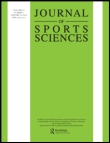
JOURNAL OF SPORTS SCIENCES
Empowering professionals through cutting-edge sports research.The JOURNAL OF SPORTS SCIENCES, published by TAYLOR & FRANCIS LTD, serves as a premier platform for disseminating influential research in the fields of sports science, orthopedics, and rehabilitation. With an impressive ISSN of 0264-0414 and E-ISSN of 1466-447X, this UK-based journal has established a significant presence in the academic community since its inception in 1983, continuing to thrive through 2024. It holds a coveted Q1 ranking across multiple disciplines including Orthopedics and Sports Medicine, and ranks 30th in Physical Therapy, showcasing its relevance and impact in the health professions sector. Although the journal does not currently offer open access, it remains a critical resource for researchers, professionals, and students dedicated to advancing knowledge and practice in sports sciences. The journal's commitment to publishing high-quality, peer-reviewed articles ensures that it remains at the forefront of innovation and discovery in sports-related health and rehabilitation.

Sport Sciences for Health
Pioneering Research at the Intersection of Sport and HealthSport Sciences for Health is a leading journal published by SPRINGERNATURE that aims to advance the understanding and application of sports science within healthcare contexts. Established in 2004, this journal has successfully provided a platform for innovative research and discussions in the fields of Orthopedics, Sports Medicine, and general Sports Science, achieving a commendable Q3 ranking in both categories as per the 2023 Scopus quartile rankings. With an active publication schedule through 2024, Sport Sciences for Health offers invaluable insights for researchers, professionals, and students who are eager to explore the intricate relationships between sport and health outcomes. This journal, set in Italy, encourages the dissemination of significant findings that can enhance athletic performance, rehabilitation strategies, and public health initiatives, fostering an integrative approach to both theory and practical applications in the realm of sport sciences.
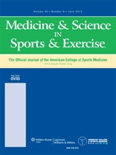
MEDICINE & SCIENCE IN SPORTS & EXERCISE
Transforming exercise science into actionable knowledge.MEDICINE & SCIENCE IN SPORTS & EXERCISE is a premier journal published by Lippincott Williams & Wilkins, dedicated to advancing the fields of sports medicine, exercise physiology, orthopedics, and physical therapy. With a significant history dating back to 1969, this journal provides a critical platform for disseminating cutting-edge research and clinical insights that shape contemporary sports science. Recognized for its rigorous peer-review standards, it boasts an impressive impact factor and ranks in the top quartile (Q1) across pivotal categories including Orthopedics and Sports Medicine, Physical Therapy, and Rehabilitation. Researchers and healthcare professionals will find it an invaluable resource for the latest findings and trends that inform practice and enhance athletic performance. The journal is available in both print and digital formats, ensuring accessibility for its audience worldwide. By fostering a rich dialogue among scientists, practitioners, and students, MEDICINE & SCIENCE IN SPORTS & EXERCISE solidifies its importance in the evolving landscape of sports health and exercise research.